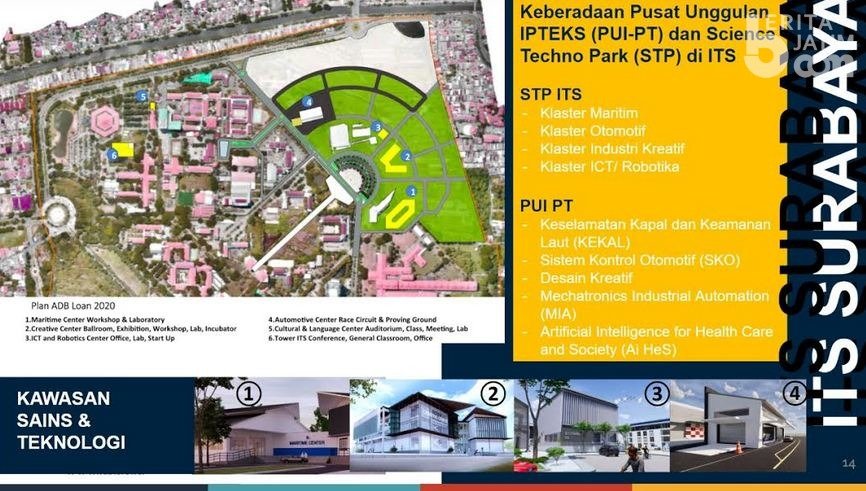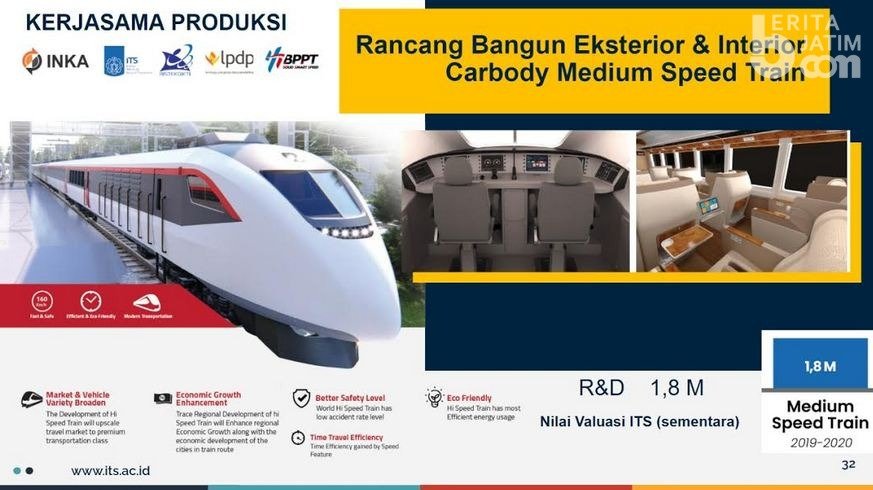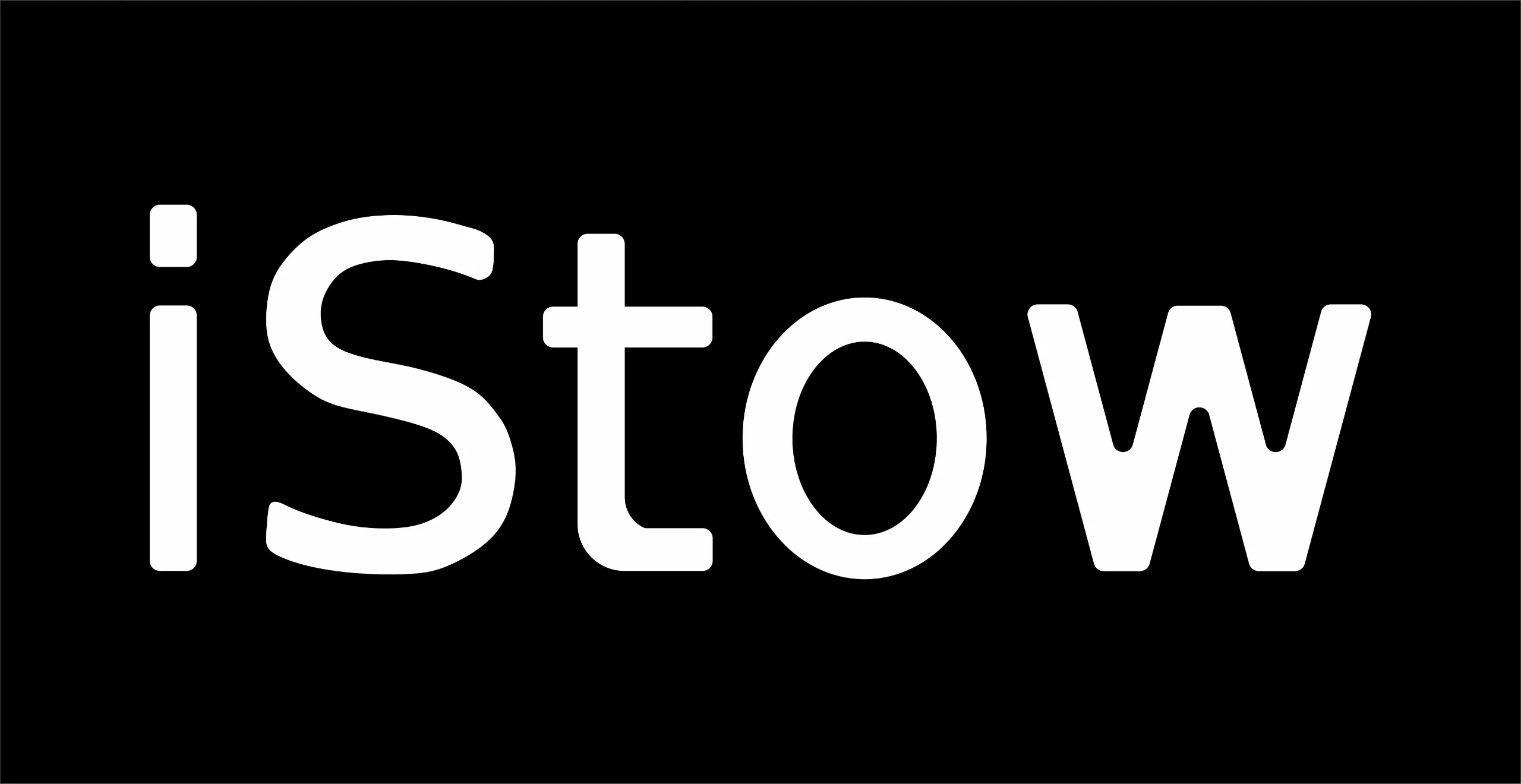Wednesday, 11 November 2020, 20:40 WIB
Reporter : Dyah Ayu Setyorini

Surabaya (beritajatim.com) – As a form of government appreciation for the development of innovation in higher education, the Ministry of Research and Technology (Kemenristek) / National Research and Innovation Agency (BRIN) awarded the 2020 Innovative Higher Education Award to a number of universities in Indonesia that were assessed best. One of them is the Sepuluh Nopember Institute of Technology (ITS) which won an award in the Innovation Management category which was officially announced at the BJ Habibie Building Auditorium, Jakarta.
Through a breakthrough entitled High Impact Research Governance to Achieve Leading Innovation, ITS managed to enter the top three of the three universities that took home the award.
Deputy Director of Innovation and Science Technology Area (DIKST) ITS Dr. Eng Kriyo Sambodho ST MEng explained, the measurement of innovation performance is an indicator of innovation that is relevant to ITS conditions, because it is through a scientific study process that can be scientifically accounted for. “With an innovation system that is well managed, it is hoped that the productivity of ITS innovations can increase,” said Dhodot, his nickname, Wednesday (11/11/2020).
ITS itself has five main sectors discussed in the concept of high impact research as an innovation proposed for innovative higher education assessments. As explained by Dhodot, the five sectors consist of policies, institutions, resources, networks, and the last is the result of innovation. Each sector has a background that aims to support the downstreaming of ITS research nationally as well as international publications.
From the policy sector, ITS aims to cultivate the creation of innovative work, increase the ability of investors, increase innovation support in the ITS budget, orient research on innovative products, and downstream products internationally. “We made changes to the Organization and Work Procedures (OTK), consortium strategy patterns, assignment and scientific topic patterns, commercialization through PT ITS Tekno Sains, and the main goal is to produce flagship and finance,” explained the lecturer at the Marine Engineering Department.
While in the institutional sector, continued Dhodot, ITS encourages institutions in the research and innovation center or the ITS Science and Technology Area (KST). Thus, in advancing the KST, ITS optimizes the role of lecturers as researchers, educators, and also students through the Student Creativity Program (PKM) and the Higher Education Science and Technology Excellence Center (PUI PT). The innovation policies rolled out are the i-Boat and i-Car as well as a scientific consortium in collaboration with the community, industry, alumni and users.

In the resource sector, Dhodot explained that ITS encourages PUI-PT and KST ITS with several clusters in the form of maritime, automotive, creative industries, and robotics. “We hold routine activities such as open recruitment, mentoring training, business matching, Incubator Class for Start Up Innovation (KINSOV) in the form of start-up innovation incubation classes, pitching, and others,” said the 1974-born lecturer.
The fourth sector is networking, namely ITS encouraging trends from the profile of cooperation with the government, other universities, industry, to non-governmental organizations (NGOs). This is evidenced by the increase in the cooperation graph every year. In 2017 alone, the ITS cooperation profile reached IDR 142.9 billion and increased to IDR 276.8 billion in 2019.
Finally, in innovation work, ITS has many sub-categories or clusters related to innovative products that have been successfully created. The clusters consist of automotive clusters with Gesits products and hybrid cars, as well as creative industry clusters with products in the form of exterior and interior carbody designs on Light Rail Transit (LRT) and Medium Speed Train, sleeper seat passenger seats, and digital designs for medical purposes.
It’s not enough to get there, there is also a robotic IC cluster with products in the form of an intelligent car (i-Car) autonomous car, face shield, Raisa robot, sterilization booth, and so on. In addition, there is also a maritime cluster with products in the form of a maritime security system called AISITS and a ship loading planning software called iSTOW (Stowage Planning Software). “So there are four clusters in terms of the results of innovation in ITS,” concluded Dhodot.
The existence of this award is expected to be able to give appreciation and appreciation to universities for their achievements in utilizing all the potential they have in an effort to support the strengthening of innovation for national independence. Not only that, the Innovative Higher Education Award is also expected to be able to encourage academicians to be motivated to increase innovation, both as individuals and institutions, in order to increase national independence.
